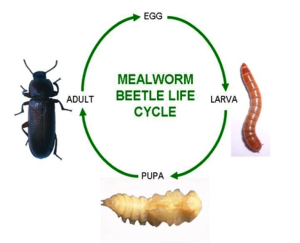 The Concepts: The children will learn about life cycles and how mealworms grow and change into beetles. They will also learn how to use a hand lens as they closely examine mealworms.
The Concepts: The children will learn about life cycles and how mealworms grow and change into beetles. They will also learn how to use a hand lens as they closely examine mealworms.
Check out the video for this activity here.
 The Concepts: The children will learn about life cycles and how mealworms grow and change into beetles. They will also learn how to use a hand lens as they closely examine mealworms.
The Concepts: The children will learn about life cycles and how mealworms grow and change into beetles. They will also learn how to use a hand lens as they closely examine mealworms.
Check out the video for this activity here.
The Concepts: In this activity, students will learn about magnetism and then will examine and test a variety of items to see if they are magnetic. Next, they will sort the items into categories by whether or not they are magnetic. Finally, they will count and graph the number of items that were attracted to a magnet and the number of items not attracted to a magnet. Other concepts discussed are letter sounds and the words yes and no.
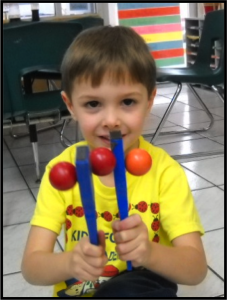
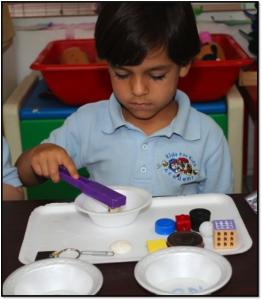

View the video for this activity here.
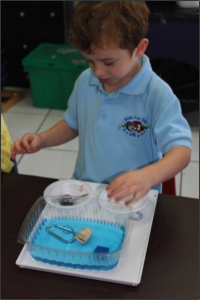
The Concepts: : This activity offers so many learning opportunities. In addition to sinking and floating, the children can explore scooping, pouring, dumping, liquids, counting, comparing, the sense of touch, wet and dry, making predictions, drawing conclusions, opposites, cold, empty, full, round, square, the letters f and s and their sounds, and following directions.
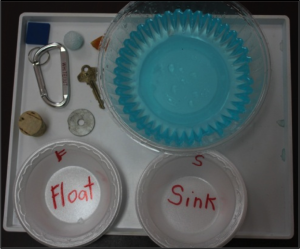
Check out the video for this activity here.
Garden Studies For Young Children
Gardening is a great way to integrate math and science into the school day. Children can begin by making predictions on growing conditions or how long it will take for plants to grow. You can plant in cups and transfer the seedling plants to containers outside. We make beds out of concrete blocks that we put in a rectangle. Then dirt is thrown in the middle to make large beds and the children also plant in the holes of the blocks on the outside. Once plants have grown, children can perform field studies to measure and count. Below are examples of activities that can be done in a school garden. Marigolds can also be planted in the holes in the blocks surrounding the bed to act as a natural pesticide. Continue reading »
The Concept: The children will examine the concept of absorption using colored water to make the process more visible. Afterward, they will review their results and graph the outcome.